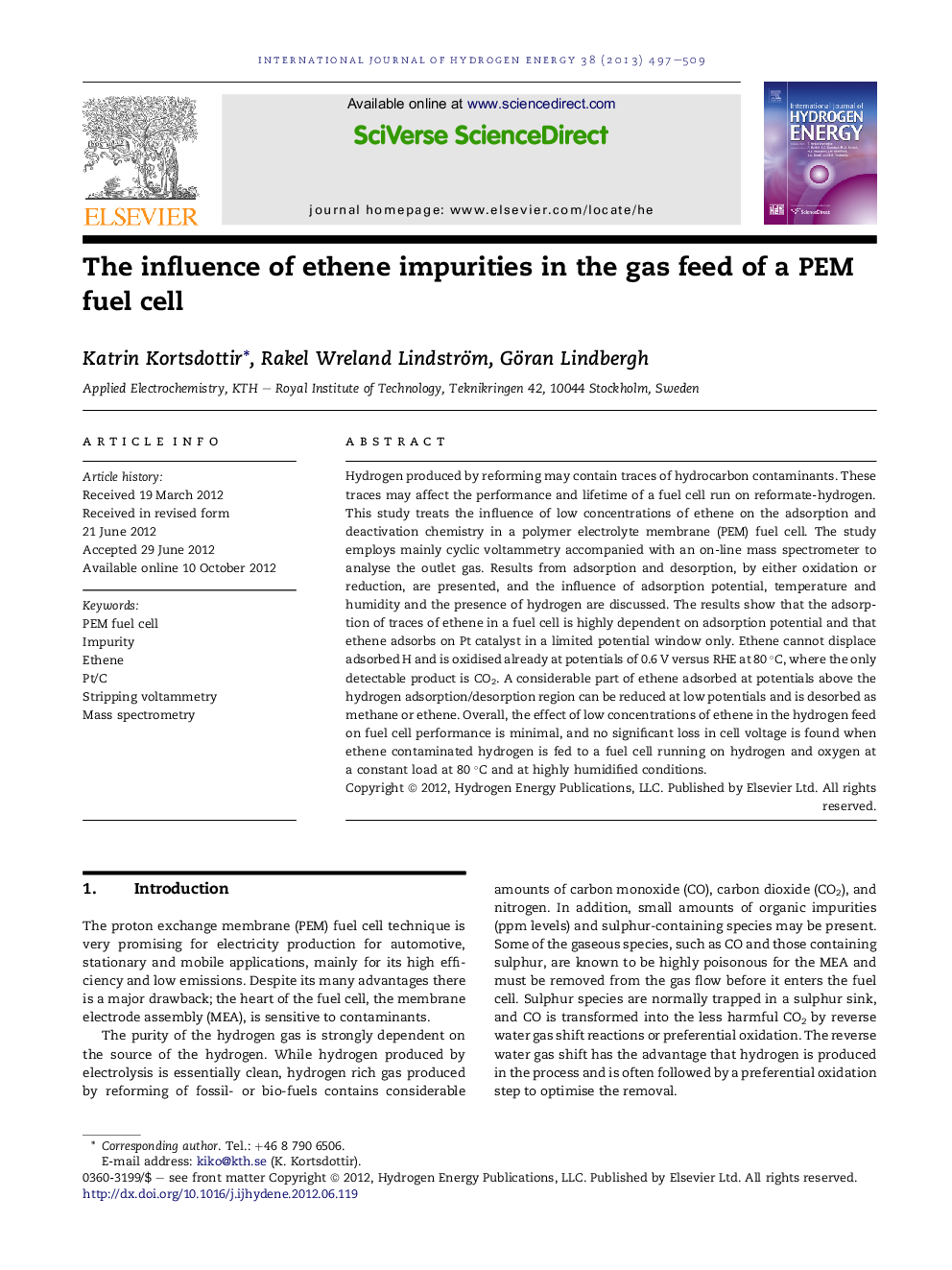| Article ID | Journal | Published Year | Pages | File Type |
|---|---|---|---|---|
| 1274398 | International Journal of Hydrogen Energy | 2013 | 13 Pages |
Hydrogen produced by reforming may contain traces of hydrocarbon contaminants. These traces may affect the performance and lifetime of a fuel cell run on reformate-hydrogen. This study treats the influence of low concentrations of ethene on the adsorption and deactivation chemistry in a polymer electrolyte membrane (PEM) fuel cell. The study employs mainly cyclic voltammetry accompanied with an on-line mass spectrometer to analyse the outlet gas. Results from adsorption and desorption, by either oxidation or reduction, are presented, and the influence of adsorption potential, temperature and humidity and the presence of hydrogen are discussed. The results show that the adsorption of traces of ethene in a fuel cell is highly dependent on adsorption potential and that ethene adsorbs on Pt catalyst in a limited potential window only. Ethene cannot displace adsorbed H and is oxidised already at potentials of 0.6 V versus RHE at 80 °C, where the only detectable product is CO2. A considerable part of ethene adsorbed at potentials above the hydrogen adsorption/desorption region can be reduced at low potentials and is desorbed as methane or ethene. Overall, the effect of low concentrations of ethene in the hydrogen feed on fuel cell performance is minimal, and no significant loss in cell voltage is found when ethene contaminated hydrogen is fed to a fuel cell running on hydrogen and oxygen at a constant load at 80 °C and at highly humidified conditions.
► Influence of traces of ethene in the hydrogen feed in a PEMFC was investigated. ► Adsorption and desorption properties were measured with voltammetry and MS. ► Ethene reacts with the platinum catalyst and forms CO2, ethane and methane. ► Ethene at ppm levels is not a critical poison for the Pt PEMFC anode catalyst.
